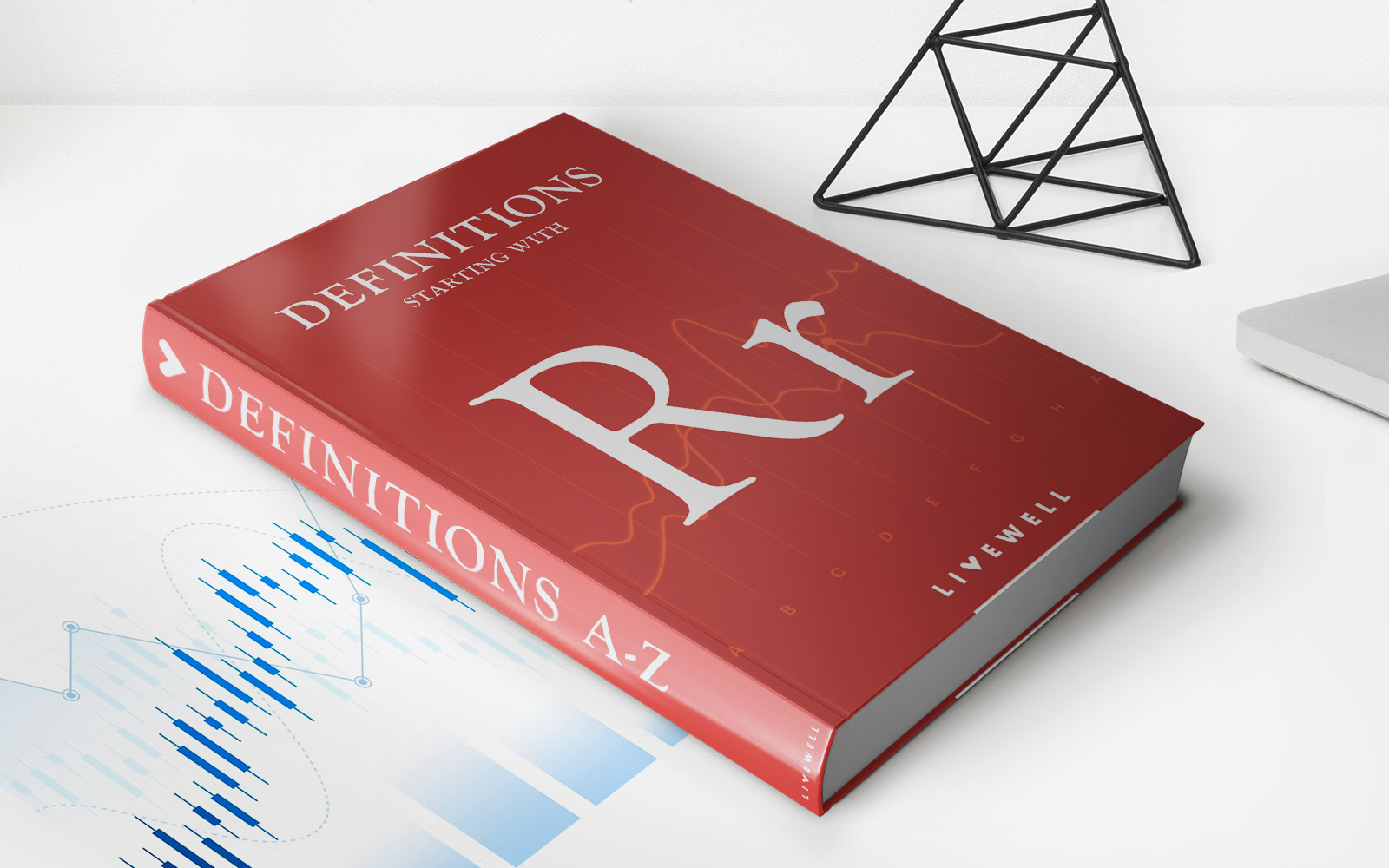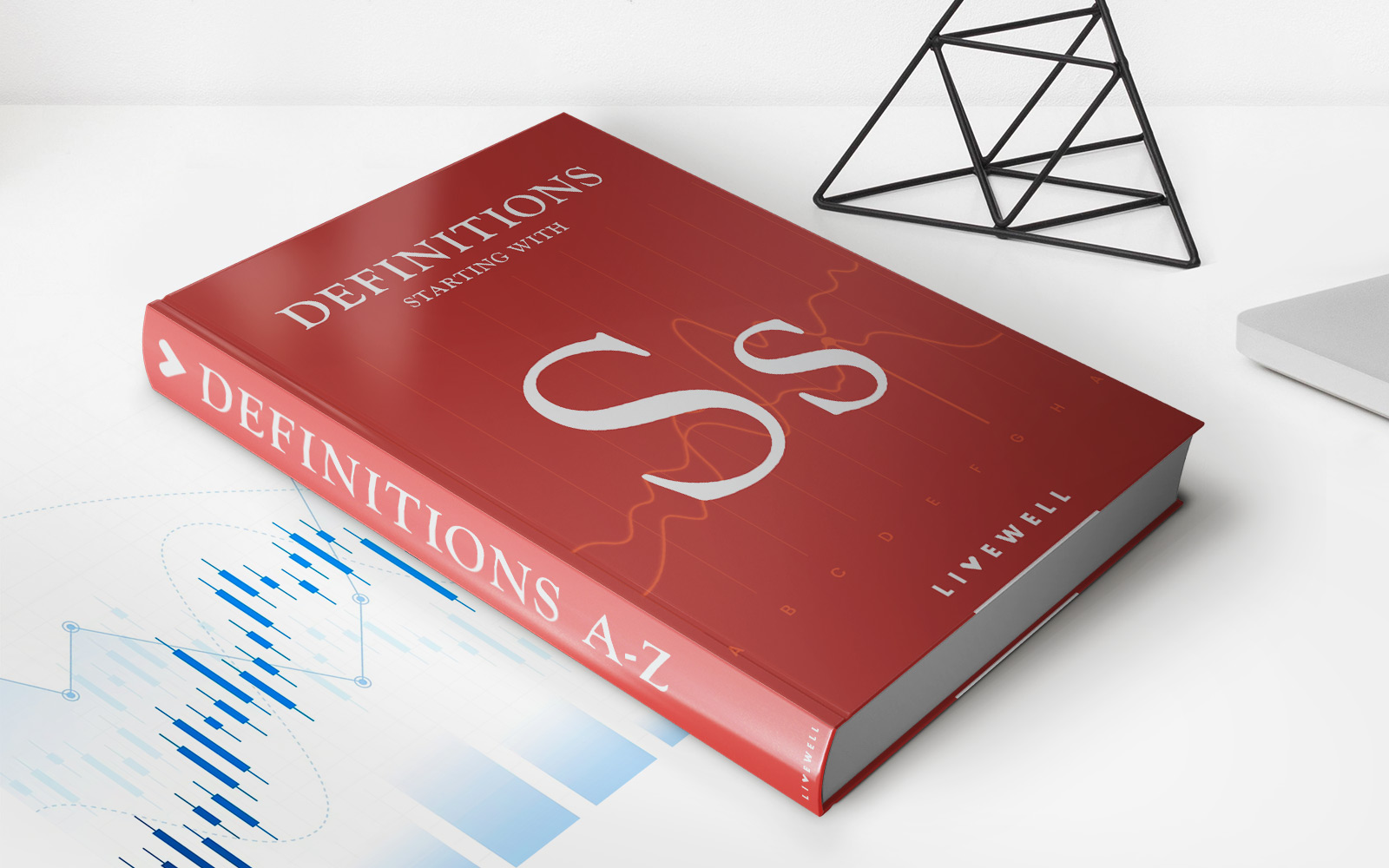Home>Education>Patriotic Resistance Explored: An Educational Journey into the Dynamics of Civic Change


Education
Patriotic Resistance Explored: An Educational Journey into the Dynamics of Civic Change
Published: January 29, 2024
Explore the dynamics of civic change through the lens of patriotic resistance, uncovering key insights and lessons for active citizenship.
(Many of the links in this article redirect to a specific reviewed product. Your purchase of these products through affiliate links helps to generate commission for LiveWell, at no extra cost. Learn more)
Patriotic resistance, a term often heard in the corridors of history and political science, encapsulates a broad spectrum of actions and ideologies. At its core, it represents a form of protest or dissent motivated by a deep-seated love for one’s country, often manifesting when citizens believe their nation’s values or sovereignty are under threat. This concept is not just a historical artifact; it is a living, evolving phenomenon that continues to shape nations and their educational frameworks.
The educational approach to understanding patriotic resistance is multifaceted. It involves delving into historical contexts, evaluating the motivations behind such movements, and understanding their impact on current educational curricula and societal norms. As an educational expert, one must dissect these layers to offer a comprehensive understanding of how patriotic resistance shapes and is shaped by educational narratives.
In education, patriotic resistance offers a rich tapestry of lessons in civic engagement, ethics, and history. It challenges students and educators alike to question and understand the balance between patriotism, dissent, and the collective good. This introduction serves as a gateway to exploring the depths of patriotic resistance, aiming to provide insights that are both historically grounded and relevant to contemporary discussions on civic identity and national values.
Historical Context of Patriotic Resistance
To fully grasp the concept of patriotic resistance, it is imperative to delve into its historical roots. This journey takes us back to various pivotal moments in history where acts of patriotic resistance have left indelible marks on the fabric of societies.
Key Historical Movements:
- The American Revolution (1775-1783): A classic example of patriotic resistance, where the thirteen American colonies rebelled against British rule. This movement was fueled by a desire for independence and self-governance, showcasing how patriotic resistance can lead to the birth of a new nation.
- India’s Independence Movement: Spanning from the late 19th century to 1947, this movement was a prolonged struggle against British colonial rule. Leaders like Mahatma Gandhi championed non-violent resistance, highlighting the diverse tactics that can be employed in patriotic struggles.
- The French Resistance during World War II: This movement saw the coming together of various French groups to fight against the Nazi occupation. It exemplifies how patriotic resistance can also be a fight for national survival and ethical integrity.
These historical instances demonstrate that patriotic resistance is not a monolith; it varies in form, scale, and impact. From armed struggles to peaceful protests, the methods of resistance have been as diverse as the causes behind them. In the educational context, these historical examples provide invaluable lessons in civic responsibility, the complexities of nationalism, and the ethical dilemmas inherent in resistance movements.
Defining Patriotic Resistance
Patriotic resistance is a complex and multifaceted concept that defies a one-size-fits-all definition. However, at its essence, it can be characterized as actions or movements driven by a profound allegiance to one’s country, often in opposition to perceived threats or injustices. This definition, while broad, encompasses the various forms and scales at which patriotic resistance manifests.
Characteristics of Patriotic Resistance:
- Motivated by Nationalistic Sentiments: The primary driver of patriotic resistance is a strong sense of national pride and identity. This emotion often arises in response to actions that are deemed to undermine the nation’s values or sovereignty.
- Diverse in Methods: Patriotic resistance can take numerous forms, from peaceful protests and civil disobedience to armed rebellions. The choice of method is often influenced by the context, objectives, and ethical considerations of those involved.
- Impact on National and Global Politics: These movements can lead to significant political changes, both within the nation and in the international arena. They often challenge existing power structures and can result in the reformation of laws, policies, and societal norms.
Understanding patriotic resistance requires an appreciation of its nuanced nature. In educational settings, it is crucial to present this concept not as a black-and-white narrative but as a spectrum of actions and ideologies shaped by complex historical and socio-political factors. This approach enables learners to critically analyze the motivations, methods, and impacts of patriotic resistance, fostering a deeper understanding of their own national history and global political dynamics.
Motivations Behind Patriotic Resistance

The motivations driving patriotic resistance are as varied as they are complex, often rooted deeply in the national psyche and historical experiences of a country. Understanding these motivations is crucial for educational experts and learners alike, as it sheds light on the reasons why individuals or groups choose to stand against prevailing systems or ideologies.
Key Drivers of Patriotic Resistance:
- Defense of National Sovereignty: Often, patriotic resistance arises when a nation’s sovereignty is threatened, either by foreign powers or internal forces perceived as oppressive. This was evident in the American Revolution and many anti-colonial movements worldwide.
- Preservation of Cultural and National Identity: Resistance can also stem from a desire to preserve unique cultural or national identities that are under threat from homogenizing forces, be they globalizing trends or domestic policies favoring cultural assimilation.
- Response to Social and Economic Injustices: Economic and social disparities within a country can fuel patriotic resistance, especially when these issues are seen as betrayals of the nation’s foundational values or promises.
- Political Repression and Lack of Representation: When citizens feel politically repressed or unrepresented, patriotic resistance can emerge as a means of demanding democratic reforms and greater participation in the political process.
In an educational context, exploring these motivations helps students understand the complexities behind national and global conflicts. It also encourages critical thinking about the ethical implications of resistance movements and the fine line between patriotism and nationalism. This understanding is crucial in developing informed and responsible citizens who can engage thoughtfully with their nation’s history and its current socio-political landscape.
Educational Impact of Patriotic Resistance
The impact of patriotic resistance on education is profound and multifaceted, influencing curricula, pedagogical approaches, and the overall ethos of educational institutions. As an educational expert, one must acknowledge and explore how these resistance movements shape the way national history and civic responsibilities are taught and understood.
Influences on Education:
- Curriculum Development: Historical events of patriotic resistance often find their way into national curricula, shaping the narrative of a nation’s history and identity. How these events are portrayed can influence students’ understanding of patriotism, ethics, and civic duty.
- Critical Thinking and Debate: Discussions around patriotic resistance provide fertile ground for developing critical thinking skills. Students learn to analyze complex issues, understand different perspectives, and engage in informed debates.
- Ethical and Civic Education: These discussions also play a crucial role in ethical and civic education, helping students grapple with questions about loyalty, dissent, justice, and the role of the individual in society.
Incorporating the study of patriotic resistance into education not only enriches students’ historical knowledge but also prepares them to participate actively and responsibly in their national and global communities. It fosters a balanced view of patriotism, encouraging them to critically assess their nation’s past and present while considering their role in shaping its future.
Case Studies of Patriotic Resistance
Examining specific instances of patriotic resistance provides valuable insights into the dynamics of these movements and their impacts on societies. Each case study offers unique lessons and perspectives, enriching the educational discourse on patriotic resistance.
Notable Case Studies:
- The Civil Rights Movement in the United States (1950s-1960s): A pivotal example of patriotic resistance, this movement sought to end racial segregation and discrimination. It highlights the role of non-violent protest and civil disobedience in achieving social change.
- The Solidarity Movement in Poland (1980s): This movement was crucial in the fight against Communist rule in Poland. It underscores the power of trade unions and grassroots organizing in challenging authoritarian regimes.
- The Arab Spring (2010-2012): A series of anti-government protests across the Arab world, the Arab Spring demonstrates the impact of digital technology in mobilizing resistance and the complexities of achieving lasting political change.
Each of these case studies provides a different lens through which to view patriotic resistance. In educational settings, they offer students concrete examples to analyze, helping them understand the real-world implications of such movements. These case studies foster a deeper appreciation of the courage, sacrifices, and strategic thinking involved in patriotic resistance, and their enduring impact on national and global histories.
Patriotic Resistance in the Digital Age

In the digital era, the landscape of patriotic resistance has undergone a significant transformation. Technology, particularly social media and the internet, has reshaped how these movements are organized, spread, and perceived both domestically and internationally. Understanding this evolution is crucial for educators aiming to provide a contemporary perspective on the dynamics of patriotic resistance.
Digital Revolution in Patriotic Movements:
- Enhanced Communication and Organization: Digital platforms have enabled rapid and widespread communication, making it easier for resistance movements to organize and mobilize. The Arab Spring is a prime example, where social media played a pivotal role in coordination.
- Globalization of Local Movements: Through the internet, local acts of patriotic resistance can gain global attention, garnering international support and putting pressure on national governments. This global visibility can significantly impact the effectiveness and direction of a movement.
- Misinformation and Propaganda Challenges: Digital platforms can also be breeding grounds for misinformation and propaganda, complicating the narrative around patriotic resistance movements. Educators need to equip students with critical digital literacy skills to navigate this complex landscape.
- Digital Surveillance and Repression: The digital age has also seen increased use of surveillance technologies by governments, posing new challenges for patriotic resistance movements in maintaining privacy and avoiding repression.
In the educational realm, incorporating discussions on the digital dimensions of patriotic resistance is vital. It offers students a realistic and modern understanding of how these movements operate today, highlighting the opportunities and challenges posed by digital technologies.
Critiques and Challenges of Patriotic Resistance
Patriotic resistance, while often glorified, is not without its critiques and challenges. These criticisms are important for educators to explore, as they provide a balanced view of such movements, highlighting the ethical, moral, and practical issues they face.
Key Critiques and Challenges:
- Ethical and Moral Dilemmas: Patriotic resistance movements often grapple with ethical questions, particularly when methods of resistance veer towards violence or when the definition of patriotism becomes exclusionary or oppressive.
- Effectiveness and Sustainability: The long-term effectiveness and sustainability of these movements is a frequent point of debate. Educators can guide discussions on whether and how patriotic resistance leads to lasting change.
- Impact on Civilians and Society: The impact of resistance movements on innocent civilians and the broader society, especially in cases of violent resistance, is a critical area of concern. These discussions help students understand the far-reaching consequences of such movements.
- Manipulation by Political Entities: There’s often a risk of patriotic resistance being co-opted by political entities for their own agendas, distorting the original goals of the movement. This aspect raises questions about the autonomy and integrity of resistance movements.
Incorporating these critiques and challenges into educational content helps develop a nuanced understanding of patriotic resistance. It encourages students to critically evaluate the complexities and real-world implications of these movements, fostering a more informed and responsible approach to understanding national and global affairs.
Future Directions and Possibilities of Patriotic Resistance
Predicting the future trajectory of patriotic resistance involves understanding current global trends and their potential impact on these movements. This foresight is vital in preparing students for the evolving nature of national and international politics.
Predictions and Possibilities:
- Increased Global Interconnectedness: As the world becomes more interconnected, the causes and effects of patriotic resistance are likely to transcend national borders, leading to more internationalized movements.
- Technological Advancements: The continued evolution of technology will shape the tactics and reach of patriotic resistance. From cyber-activism to AI-driven propaganda, the digital dimension will play an increasingly central role.
- Climate Change and Resource Scarcity: Environmental issues are likely to become prominent drivers of patriotic resistance, as communities fight to protect their land and resources in the face of climate change and scarcity.
- Shifting Global Power Dynamics: The changing landscape of global power dynamics, with emerging powers challenging the existing order, may lead to new forms of patriotic resistance, both in established and developing nations.
For educators, staying abreast of these trends and incorporating them into discussions on patriotic resistance is key. It helps students understand the dynamic nature of these movements and prepares them to engage with a rapidly changing world.
Reflecting on Patriotic Resistance
In reflecting on the concept of patriotic resistance and its myriad dimensions, it becomes evident that this is not just a topic confined to the pages of history books. Instead, it’s a vibrant, evolving subject with deep implications for the educational landscape. This reflection aims to encapsulate the critical insights gained from this exploration and to consider the ways in which education can adapt to and inform the understanding of patriotic resistance in a rapidly changing world.
Integrating Patriotic Resistance into Modern Education:
- Promoting a Balanced Narrative: One of the primary responsibilities of educators is to present a balanced view of patriotic resistance. This involves acknowledging both the valor and the complexities of such movements, ensuring that students can appreciate the multifaceted nature of nationalistic actions.
- Encouraging Critical Analysis: Education should equip students with the skills to critically analyze the motives, methods, and impacts of patriotic resistance. This critical thinking is essential for developing informed citizens who can engage constructively in societal and political discourse.
- Fostering Ethical Reflection: Discussing patriotic resistance in classrooms should also involve ethical reflection. Students should be encouraged to contemplate the moral implications of resistance movements and to understand the fine line between patriotism and extremism.
- Global Contextualization: Given the interconnected nature of the modern world, educators must place patriotic resistance within a global context. This approach helps students understand how national movements can have international ramifications and vice versa.
- Preparing for Future Challenges: The educational system must also anticipate and prepare for future challenges that may spark patriotic resistance, such as climate change, technological advancements, and shifting global power dynamics. Preparing students for these challenges ensures that they are not just passive observers but active, informed participants in their national and global communities.
In conclusion, the study of patriotic resistance offers a rich and dynamic field for educational exploration. It provides an opportunity to delve into historical events, analyze current societal dynamics, and anticipate future trends. By integrating these lessons into the educational framework, we can prepare students to be not just knowledgeable about their past but also capable of shaping a more informed and responsible future. This integration is not just an academic exercise; it is a crucial step towards fostering a generation of citizens who are equipped to navigate the complexities of patriotism, resistance, and civic engagement in an increasingly complex world.














